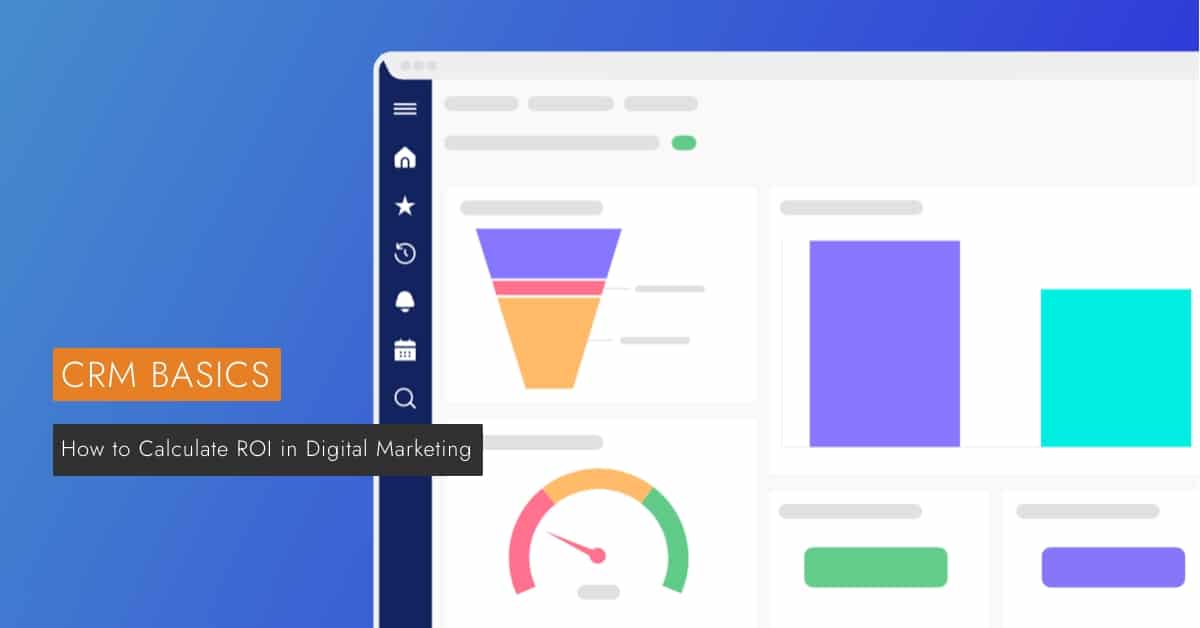How to Calculate ROI in Digital Marketing: An Essential Framework for Success

Are you looking for a system to help you calculate your return on investment (ROI)?
Do you want to understand how to calculate ROI for your digital marketing efforts?
If so, you’ve come to the right place. In this post, we’ll provide a framework for calculating ROI for digital marketing—a tool that you can use to measure the profitability of your efforts.
We’ll also provide an overview of some of the common pitfalls that people experience when calculating ROI.
How to Calculate ROI in Digital Marketing
Calculating ROI (return on investment) can seem relatively simple, that is, of course, before we get into the complex ROI models.
The fundamental ROI formula is easy enough: take the general value of your investment, deduct the cost, and divide it by the cost of the investment.
ROI = (Gains from Investment – Cost of Marketing) / Cost of Marketing
To put it in simpler terms, ROI compares the profits to the amount of money invested in creating and deploying a digital marketing campaign. A business person would want their ROI as high as possible.
Because of its simplicity, this basic ROI calculation formula comes with some limitations. For instance, you cannot use it to calculate long-term return on investment for your digital marketing campaigns. Additionally, it does not include indirect benefits, such as social return, of your marketing campaigns.
That’s why there are more complex ROI calculations models that give more accurate return on investment values, such as:
- Using a CRM (customer relationship management) tool.
- Tagging links with UTM parameters
- Setting up digital tracking pixels
Let’s look at these tactics in detail:
Using a Customer Relationship Management (CRM) Tool
A CRM tool helps you track leads from the initial contact to when they conclude their purchasing journey. When calculating ROI, this software can come in handy. It allows you to monitor and tag leads generated by your digital marketing campaign. This way, it is easier to evaluate the number of opportunities your digital marketing investment provides for your business.
Setting up Digital Tracking Pixels
Tracking pixels have become all too common in digital marketing campaigns today. They help track where traffic is coming from and how you can target these customers in your future remarketing campaigns.
Digital tracking pixels are added to business websites. When you need to calculate your ROI, these elements can help you determine where the traffic is coming from as well as any transactions taking place on your website. That provides you with precise data for accurate ROI calculations.
Tagging Links with UTM Parameters
A UTM link is another valuable method to use when calculating ROI. Before we get into how it works, let’s first understand what a UTM link is. A UTM (or Urchin Tracking Module) link is a lengthy URL with a question mark affixed to it. They are different from regular links as they allow you to track your digital marketing efforts through Google Analytics.
When a customer visits your website and clicks a link tagged with a UTM code, Google Analytics will track their location alongside the campaign that created the link. That gives you a precise idea of how many opportunities each digital marketing campaign has brought to your business.
Calculating ROI won’t signify anything if you haven’t set focused objectives, used inaccurate numbers to do the calculations, or aren’t clear on what you are monitoring.
For that reason, it is essential to consider the following few things before calculating ROI on your digital marketing campaigns.
- Understand the marketing objectives and goals
- Identify key performance indicators (KPIs)
- Use clean data collection methods
- Draw insights from KPIs to measure ROIs
Common Pitfalls that Many People Experience When Calculating ROI
Basically, your ROI is an estimate of the gains you have generated compared to the cost of the marketing campaign. Unfortunately, getting an accurate ROI value is much more complicated than the formula can insinuate. Here are some common pitfalls that people experience when calculating ROI.
It Is Difficult to Directly Link Some Marketing Campaigns to Revenue
The majority of marketing initiatives revolve around creating awareness for a product or service. Without a defined value, it is challenging for you to tie it to revenues. Some sophisticated digital marketers might achieve this using a wide range of techniques—however, this is an exception rather than a norm.
Labor Costs for Internal Employees Can Be Difficult to Calculate
If you’re paying an external firm to carry out all the work, it can be easier to estimate the costs of your marketing campaign. However, the majority of businesses run advertisement initiatives using their employees. That makes it difficult to calculate the initial costs invested in the campaign.
In Summary
ROI in digital marketing is vital for your business as it helps you monitor the progress of your marketing campaigns. With such conclusive data, you can identify sections that require change as well as funnel your efforts towards the most efficient and effective marketing channels.
